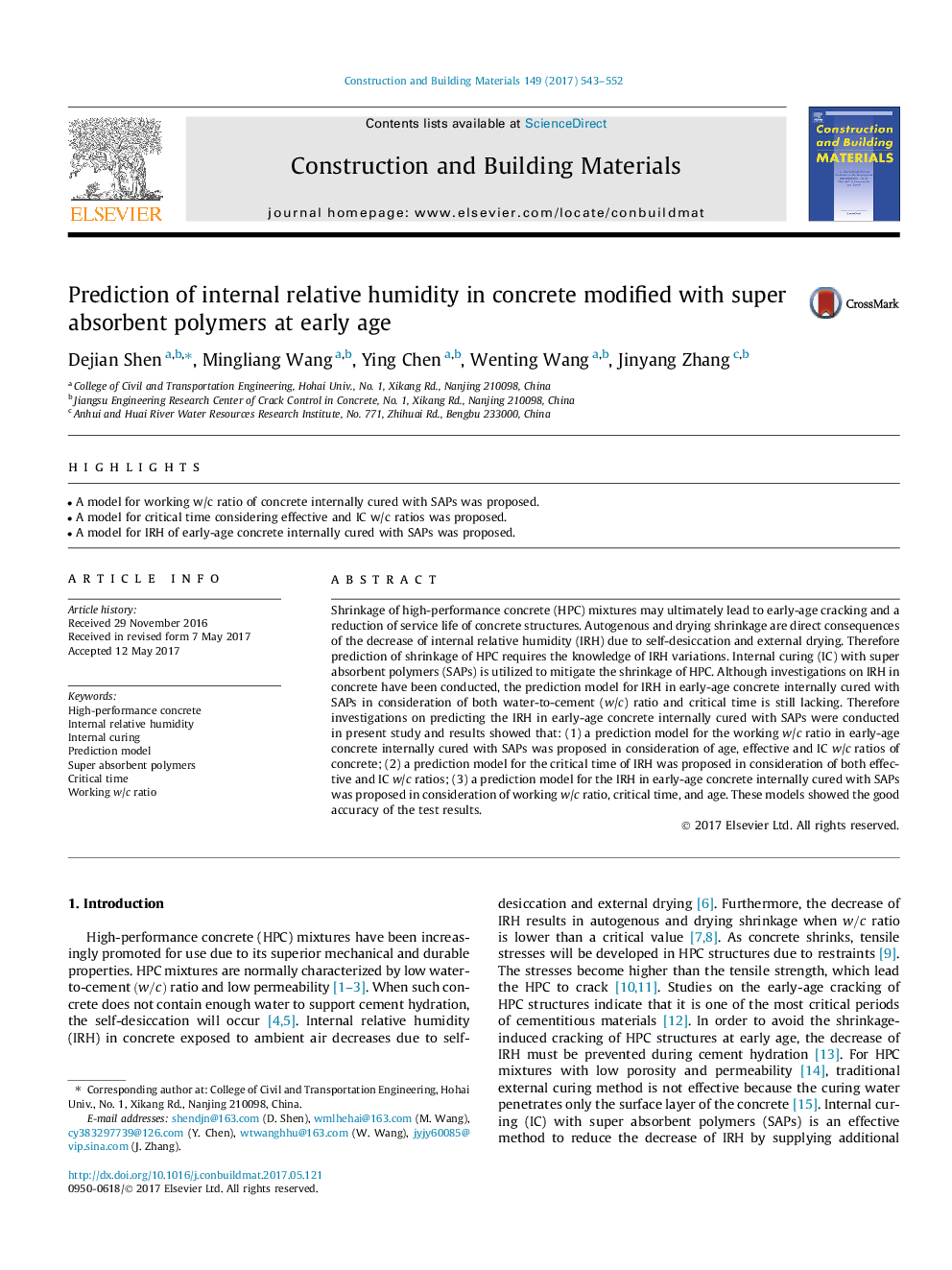| Article ID | Journal | Published Year | Pages | File Type |
|---|---|---|---|---|
| 4913098 | Construction and Building Materials | 2017 | 10 Pages |
Abstract
Shrinkage of high-performance concrete (HPC) mixtures may ultimately lead to early-age cracking and a reduction of service life of concrete structures. Autogenous and drying shrinkage are direct consequences of the decrease of internal relative humidity (IRH) due to self-desiccation and external drying. Therefore prediction of shrinkage of HPC requires the knowledge of IRH variations. Internal curing (IC) with super absorbent polymers (SAPs) is utilized to mitigate the shrinkage of HPC. Although investigations on IRH in concrete have been conducted, the prediction model for IRH in early-age concrete internally cured with SAPs in consideration of both water-to-cement (w/c) ratio and critical time is still lacking. Therefore investigations on predicting the IRH in early-age concrete internally cured with SAPs were conducted in present study and results showed that: (1) a prediction model for the working w/c ratio in early-age concrete internally cured with SAPs was proposed in consideration of age, effective and IC w/c ratios of concrete; (2) a prediction model for the critical time of IRH was proposed in consideration of both effective and IC w/c ratios; (3) a prediction model for the IRH in early-age concrete internally cured with SAPs was proposed in consideration of working w/c ratio, critical time, and age. These models showed the good accuracy of the test results.
Keywords
Related Topics
Physical Sciences and Engineering
Engineering
Civil and Structural Engineering
Authors
Dejian Shen, Mingliang Wang, Ying Chen, Wenting Wang, Jinyang Zhang,
